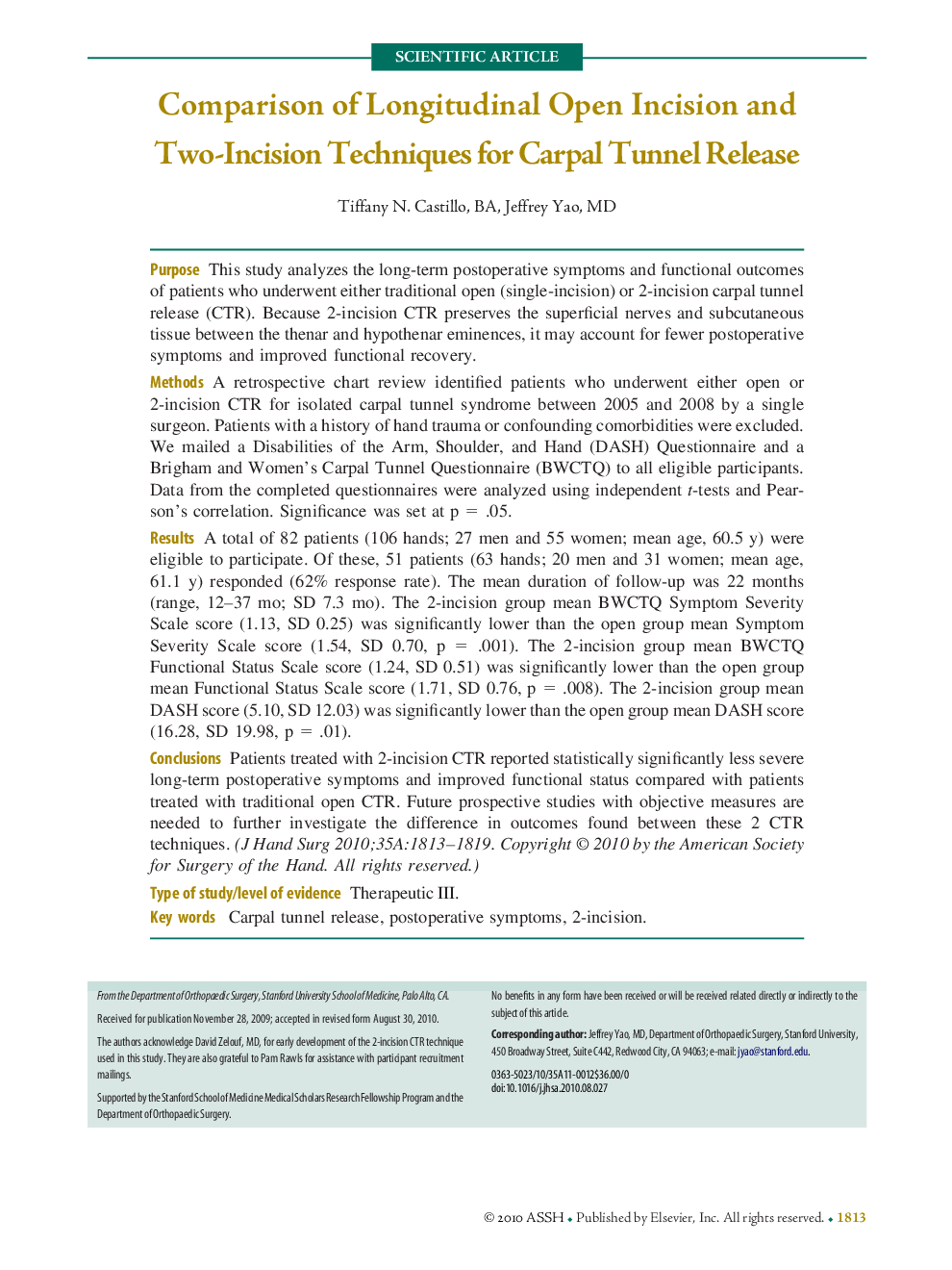| Article ID | Journal | Published Year | Pages | File Type |
|---|---|---|---|---|
| 4070035 | The Journal of Hand Surgery | 2010 | 7 Pages |
PurposeThis study analyzes the long-term postoperative symptoms and functional outcomes of patients who underwent either traditional open (single-incision) or 2-incision carpal tunnel release (CTR). Because 2-incision CTR preserves the superficial nerves and subcutaneous tissue between the thenar and hypothenar eminences, it may account for fewer postoperative symptoms and improved functional recovery.MethodsA retrospective chart review identified patients who underwent either open or 2-incision CTR for isolated carpal tunnel syndrome between 2005 and 2008 by a single surgeon. Patients with a history of hand trauma or confounding comorbidities were excluded. We mailed a Disabilities of the Arm, Shoulder, and Hand (DASH) Questionnaire and a Brigham and Women's Carpal Tunnel Questionnaire (BWCTQ) to all eligible participants. Data from the completed questionnaires were analyzed using independent t-tests and Pearson's correlation. Significance was set at p = .05.ResultsA total of 82 patients (106 hands; 27 men and 55 women; mean age, 60.5 y) were eligible to participate. Of these, 51 patients (63 hands; 20 men and 31 women; mean age, 61.1 y) responded (62% response rate). The mean duration of follow-up was 22 months (range, 12–37 mo; SD 7.3 mo). The 2-incision group mean BWCTQ Symptom Severity Scale score (1.13, SD 0.25) was significantly lower than the open group mean Symptom Severity Scale score (1.54, SD 0.70, p = .001). The 2-incision group mean BWCTQ Functional Status Scale score (1.24, SD 0.51) was significantly lower than the open group mean Functional Status Scale score (1.71, SD 0.76, p = .008). The 2-incision group mean DASH score (5.10, SD 12.03) was significantly lower than the open group mean DASH score (16.28, SD 19.98, p = .01).ConclusionsPatients treated with 2-incision CTR reported statistically significantly less severe long-term postoperative symptoms and improved functional status compared with patients treated with traditional open CTR. Future prospective studies with objective measures are needed to further investigate the difference in outcomes found between these 2 CTR techniques.Type of study/level of evidenceTherapeutic III.
